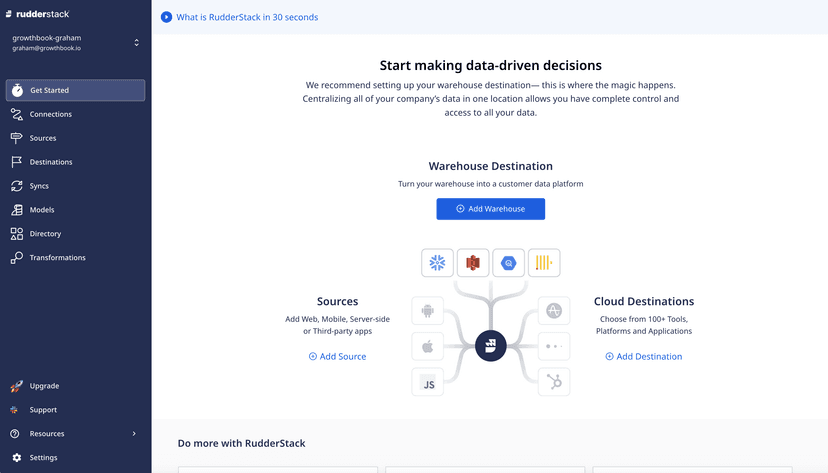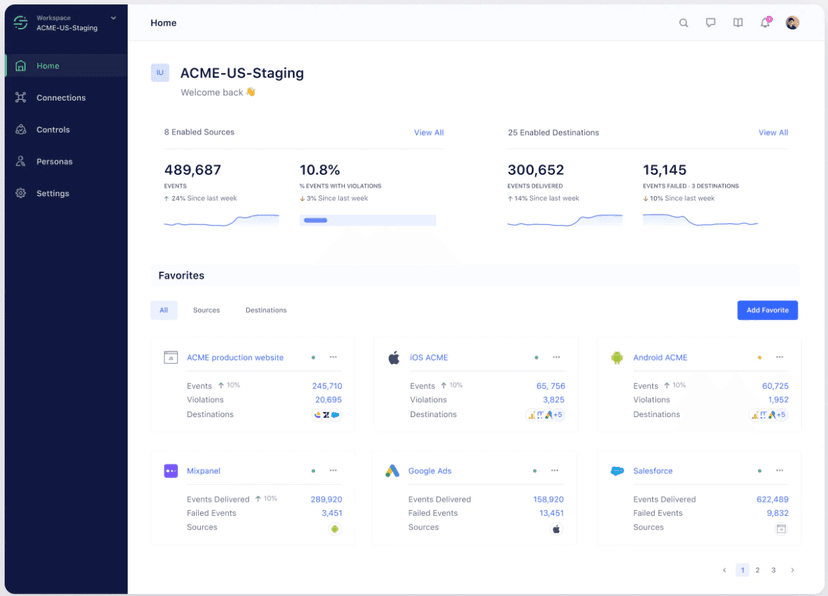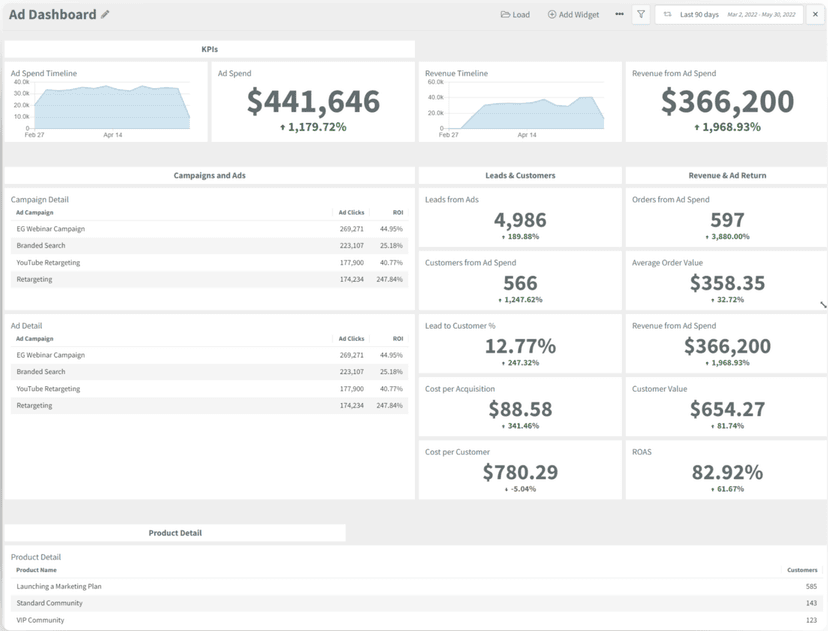Best customer data platforms
Introduction
A CDP is a packaged software that creates a persistent, unified customer database accessible to other systems. It collects and aggregates data from multiple sources to create a comprehensive 360-degree view of each customer. This unified data can then be used to enhance customer management and create highly targeted, personalized marketing campaigns across various channels.
When comparing CDPs, it's important to consider their key features and capabilities:
- Data collection and unification
- Customer profile creation
- Segmentation and analytics
- Integration with other marketing tools
- Data privacy and compliance features
- User-friendly interface for marketers
By implementing a CDP, businesses can solve common problems such as lack of a single customer view, customer churn, unreliable data, and attribution in ad platforms. The right CDP can empower marketers to take control of their customer data, leading to more effective and efficient marketing strategies.
In this comparison made by our digital marketing experts, we'll examine some of the top Customer Data Platforms available, highlighting their strengths, weaknesses, and unique features to help you find the best solution for your organization's needs.
Able CDP

| Price | $49/month ($145/month with conversions API integrations) for up to 300,000 processed events per month, $5 for each additional 100,000 events above first 500,000 events tracked; no revenue-based cap or fees |
| Sends conversions to ad platforms | Yes, attributed to the original click ids. Supports Meta Ads, Google Ads, TikTok and Pinterest |
| Channels | Web, call tracking (using CallRail and similar third-party products), mobile app tracking (requires custom integration) |
| RoAS reporting | Built-in revenue attribution reporting, reporting via ad platforms' conversions APIs, custom reporting using third-party BI platforms via BigQuery data warehouse |
| Cookieless tracking | Native cookieless tracking of single-page applications and third-party checkouts like Stripe payment links; cookieless attribution of offline conversions based on previously tracked lead sources |
| Data export | Real-time BigQuery events export; manual reports export to CSV |
Able Customer Data Platform is designed to provide a complete view of customer interactions across various touchpoints. It integrates with marketing tools, allowing businesses to track customer behavior and attribute events throughout the sales funnel. This integration aids in enhancing marketing strategies by providing actionable data from customer interactions without requiring complex configuration or coding.
One of the key features of Able CDP is support of the server-side conversion tracking and ad platform attribution, ensuring that the first-party customer data collected in back-office systems such as e-commerce platforms and payment systems are attributed to the click identifiers before being sent to the ad platforms' conversion APIs.
Additionally, Able CDP assists businesses in managing and analyzing customer data. It allows for advanced segmentation capabilities, enabling marketers to identify and target high-value audiences. This feature is particularly useful for companies looking to engage customers in funnels with long sales cycles or recurring payments.
Would you like to try Able CDP? Sign up for a free trial
PostHog

| Price | Free up for to 1,000,000 events per month; starts from $260 for each 100,000 events thereafter (with Data Pipeline and Person Profile add-ons enabled) |
| Sends conversions to ad platforms | Not available |
| Channels | Web |
| RoAS reporting | Not available out-of-the-box |
| Cookieless tracking | Requires custom coding |
| Data export | Batch reports export to S3, Snowflake, BigQuery, Postgres, Redshift |
PostHog is a platform designed for developers, offering a suite of tools for product analytics, feature flags, session replays, A/B testing, and surveys. Unlike traditional analytics tools, PostHog aims to replace multiple tools in the data stack, providing a single platform for these functionalities. This ap...
RudderStack

| Price | Starts at $600/month for up to 3,000,000 monthly events |
| Sends conversions to ad platforms | Event feed mode only - attribution to click ids and browser ids must be performed externally |
| Channels | Web |
| RoAS reporting | Not available |
| Data export | Snowflake, BigQuery, Redshift and others |
RudderStack is an open-source customer data platform that helps businesses collect and manage customer data. It operates with a warehouse-first approach, focusing on building a customer data lake within a user's data warehouse. According to the company, this offers improved data control and flexibility, often...
Segment

| Price | Bespoke pricing, value-based |
| Sends conversions to ad platforms | All major ad platforms are supported |
| Channels | Web, third-party data sources |
| RoAS reporting | Not available |
| Data export | BigQuery, Redshift and other major data warehouses |
Segment is a traditional Customer Data Platform that is more than a decade old. It is known for its event collection framework, which allows businesses to gather and manage customer data from various sources. Segment's platform aims to unify customer data into a single, centralized database, enabling marketer...
SegMetrics

| Price | From $175 per month ($375/mo with ad platforms integrations) for up to $1M annual revenue |
| Sends conversions to ad platforms | Facebook, Google Ads and other major ad platforms |
| Channels | Web, call tracking (with CallRail) |
| RoAS reporting | Built-in |
| Cookieless tracking | Not available |
| Data export | Individual events via Segment or Zapier |
SegMetrics is a customer journey tracking tool that automatically logs lead data, including purchases, page visits, and clicked emails. This feature allows users to visualize their customer interactions, providing a clear view of how customers progress through the marketing funnel. Unlike traditional web anal...
About the authors
This comprehensive guide on the best customer data platforms was compiled by a team of experienced digital marketing experts at Able CDP. Our team combines years of hands-on experience in digital marketing, data analytics, and technology solutions to provide you with insightful, accurate, and practical information.
Methodology
When preparing the comparison of the best customer data platforms providers, our experts follow cutting edge qualitative research methodology (for an overview, see, for example, Research Methods for Business Students, (Saunders et al, 2019)). The source data analyzed during the preparation of this comparison includes:
- facts and statements published on the reviewed providers' websites at the time when they're accessed;
- interviews with digital marketers having first-hand experience of using the aforementioned software;
- published secondary sources.
While we strive to keep the page up-to-date, it is possible that the changes to the services listed above may occur that are not reflected immediately. If you notice any inaccuracies or outdated information, please contact us.